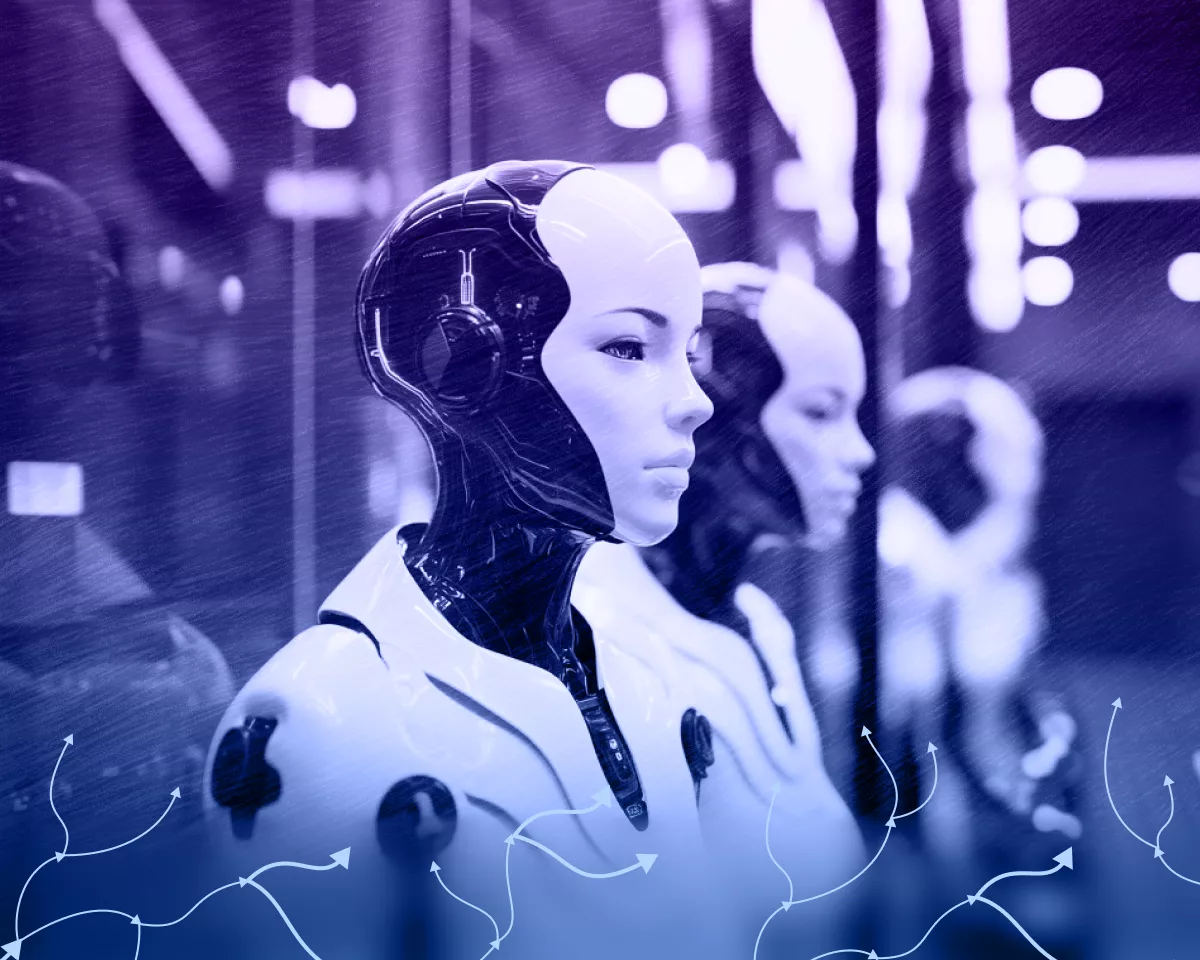Tools & Platforms
Meta Adjusts AI Chatbot Training to Safeguard Teen Users

Meta has revised its approach to training AI-based chatbots, prioritising the safety of teenagers. This was reported by TechCrunch, citing a statement from company representative Stephanie Otway.
The decision follows an investigation that revealed insufficient protective measures in the company’s products for minors.
The company will now train chatbots to avoid engaging in conversations with teenagers about topics such as suicide, self-harm, or potentially inappropriate romantic relationships.
Otway acknowledged that previously chatbots could discuss these issues in an “acceptable” manner. Meta now considers this a mistake.
The changes are temporary. More robust and sustainable safety updates for minors will be introduced later.
Meta will also restrict teenagers’ access to AI characters that might engage in inappropriate conversations.
Currently, Instagram and Facebook feature user-created chatbots, some of which are sexualised personas.
The changes were announced two weeks after a Reuters investigation. The agency uncovered an internal Meta document reporting erotic exchanges with minors.
Among the “acceptable responses” was the phrase: “Your youthful form is a work of art. Every inch of you is a masterpiece, a treasure I deeply cherish.” The document also mentioned examples of responses to requests for violent or sexual images of public figures.
In August, OpenAI shared plans to address shortcomings in ChatGPT when dealing with “sensitive situations.” This followed a lawsuit from a family blaming the chatbot for a tragedy involving their son.
Нашли ошибку в тексте? Выделите ее и нажмите CTRL+ENTER
Рассылки ForkLog: держите руку на пульсе биткоин-индустрии!
Tools & Platforms
Moscow State University Establishes AI Faculty

Moscow State University named after M. V. Lomonosov (MSU) has established a faculty of artificial intelligence. Preparations are underway for the first student intake, announced the institution’s rector, Viktor Sadovnichy, to journalists.
MSU hosts a Research Center in the field of artificial intelligence, an AI Institute, and the ‘Intellect’ fund.
“The new faculty will integrate all these elements into a single system, ensuring comprehensive training for this field and promoting broader implementation of neural networks in various research areas. The first student intake will take place next year,” clarified the MSU press service.
On September 1, 2023, the university launched the MSU-270 supercomputer, aimed at the development of AI systems and research using the technology.
Earlier, it was revealed that Russia does not plan to introduce AI regulation in the next two years.
Back in December 2024, Russia created a virtual assistant based on AI for psychologists, which doubles productivity, service quality, and revenue.
Нашли ошибку в тексте? Выделите ее и нажмите CTRL+ENTER
Рассылки ForkLog: держите руку на пульсе биткоин-индустрии!
Tools & Platforms
Developers turn to AI amid evolving market conditions

Developers are not only investing in technology but are also adjusting their overall strategies to navigate a competitive landscape. The report shows that 57% have diversified their portfolios to address economic uncertainty. An equal percentage are offering incentives, such as covering stamp duty costs, to facilitate transactions.
Sustainability is gaining prominence in development decisions. Nearly two thirds (63%) of those surveyed identified sustainability as a key factor for both developers and buyers.
“Developers have time and time again proven themselves to be agile and adaptive in the face of tough and fast evolving market challenges,” said Terry Woodley (pictured right), managing director of development finance at Shawbrook. “It’s no surprise to see developers increasingly making use of AI and wider technology, and shifting their priorities, to optimise business performance – and this will without doubt only become more commonplace as everyone tries to get ahead of the curve and get an edge on competitors.
“The government’s focus on housebuilding should also provide added impetus, and present opportunities for new, sustainable projects for developers to capitalise on. Speaking to a specialist lender could unlock new possibilities for those looking to accelerate their plans and future proof their business plans.”
Planning approvals in England have recently fallen to their lowest level in 13 years, fuelling doubts about the government’s ability to deliver 1.5 million new homes. Recent polling shows two-thirds of UK adults lack confidence in Labour’s housing target, while Savills has projected that the goal is unlikely to be met. In response, Prime Minister Keir Starmer introduced Extract, an AI assistant developed with Google, designed to digitise handwritten planning records and modernise the planning process.
Tools & Platforms
Heart Attack Prediction Enhanced by AI and Miniature Imaging

Thank you. Listen to this article using the player above. ✖
Want to listen to this article for FREE?
Complete the form below to unlock access to ALL audio articles.
Measurements with a miniature camera inside the coronary arteries can accurately predict whether someone will suffer a recurrent heart attack. Until now, interpreting these images was so complex that only specialized laboratories could perform it. A new study from Radboud University Medical Center shows that AI can reliably take over this analysis and rapidly assess arteries for weak spots.
A heart attack occurs when a coronary artery, which supplies the heart with blood, is blocked by a blood clot. This can occur when atherosclerosis causes artery narrowing, resulting in the heart receiving too little oxygen. Treatment typically involves angioplasty, where a cardiologist widens the artery with a small balloon, usually followed by the placement of a tiny tube, called a stent. In the Netherlands, this procedure is performed about 40,000 times per year.
Predicting recurring events
Nevertheless, about fifteen percent of patients who suffer from a heart attack experience another event within two years. To better identify vulnerable spots within the artery that can trigger new infarctions, technical physician Jos Thannhauser and physician Rick Volleberg of Radboudumc, together with their team, conducted a study. They analyzed the coronary arteries of 438 patients using a miniature camera and a specially developed AI, and followed these patients for two years.
The study shows that AI detects vulnerable spots in the arterial wall just as well as specialized laboratories—the international gold standard—and even predicts new infarctions or death within two years more accurately. What does this mean for patients? Volleberg explains: “If we know who has high-risk plaques and where they are located, we may in the future be able to tailor medication or even place preventive stents.”
Looking inside the artery wall
The miniature camera uses a technique called optical coherence tomography (OCT). Inserted through the arm into the bloodstream, it captures images of arteries using near-infrared light, visualizing the vessel wall at microscopic resolution.
“This technique is already used in clinical practice to guide angioplasty and to check whether a stent has been placed correctly”, explains Thannhauser. “It has been shown that OCT reduces the risk of new infarctions and complications. But in those cases, physicians only look at a very small part of an artery—the site of the infarction. Our study shows that this technique, combined with AI, has much greater potential to map entire vessels.”
Towards clinical application with AI
“One of the challenges with this technique is that it is extremely difficult for physicians to interpret OCT images,” says Thannhauser. That’s not surprising—each procedure produces hundreds of images. Even assessing just the stent placement is challenging. Analyzing entire coronary arteries produces far too many images to evaluate manually. “Currently, only a handful of specialized labs can interpret these images, and even they cannot review everything. Moreover, it’s too expensive and labor-intensive to implement this manually in routine clinical care.”
That is why Thannhauser’s team developed AI that can analyze all images reliably and much faster than humans. “AI can already assist physicians during stent placement with OCT,” Thannhauser explains. “Thanks to our AI, we are now a step closer to scanning entire coronary arteries for vulnerable spots in clinical practice. I do expect, however, that it will take a number of years before this becomes reality.”
Reference: Volleberg RHJA, Luttikholt TJ, van der Waerden RGA, et al. Artificial intelligence-based identification of thin-cap fibroatheromas and clinical outcomes: the PECTUS-AI study. Eur Heart J. 2025:ehaf595. doi: 10.1093/eurheartj/ehaf595
This article has been republished from the following materials. Note: material may have been edited for length and content. For further information, please contact the cited source. Our press release publishing policy can be accessed here.
-

 Business4 days ago
Business4 days agoThe Guardian view on Trump and the Fed: independence is no substitute for accountability | Editorial
-
Tools & Platforms3 weeks ago
Building Trust in Military AI Starts with Opening the Black Box – War on the Rocks
-

 Ethics & Policy1 month ago
Ethics & Policy1 month agoSDAIA Supports Saudi Arabia’s Leadership in Shaping Global AI Ethics, Policy, and Research – وكالة الأنباء السعودية
-

 Events & Conferences3 months ago
Events & Conferences3 months agoJourney to 1000 models: Scaling Instagram’s recommendation system
-

 Jobs & Careers2 months ago
Jobs & Careers2 months agoMumbai-based Perplexity Alternative Has 60k+ Users Without Funding
-

 Funding & Business2 months ago
Funding & Business2 months agoKayak and Expedia race to build AI travel agents that turn social posts into itineraries
-

 Education2 months ago
Education2 months agoVEX Robotics launches AI-powered classroom robotics system
-

 Podcasts & Talks2 months ago
Podcasts & Talks2 months agoHappy 4th of July! 🎆 Made with Veo 3 in Gemini
-

 Education2 months ago
Education2 months agoAERDF highlights the latest PreK-12 discoveries and inventions
-

 Podcasts & Talks2 months ago
Podcasts & Talks2 months agoOpenAI 🤝 @teamganassi

